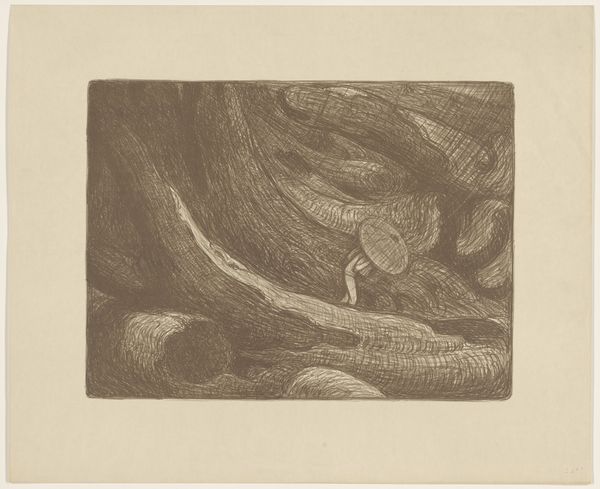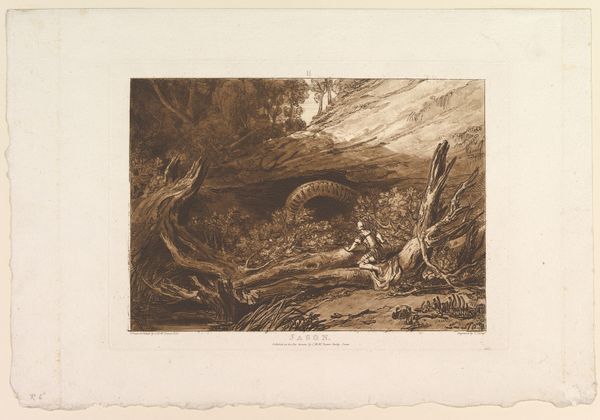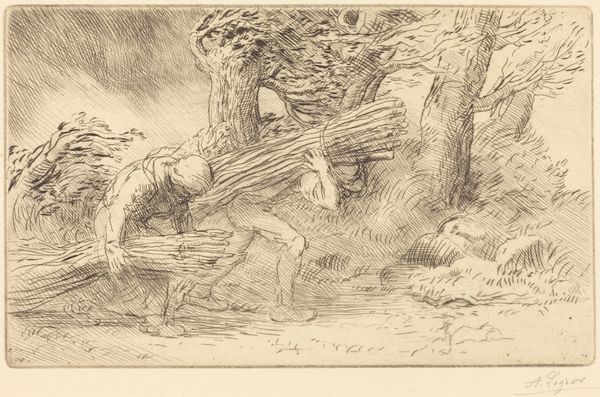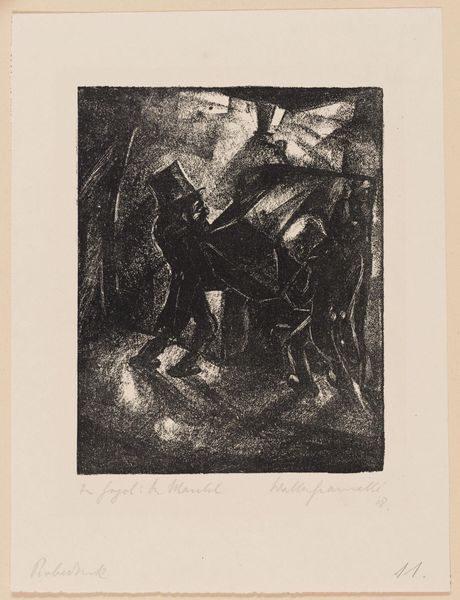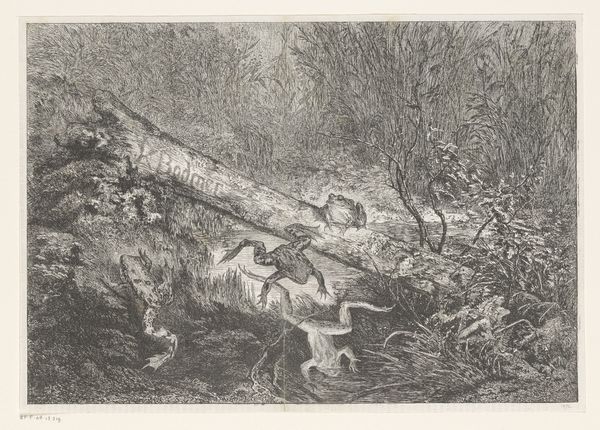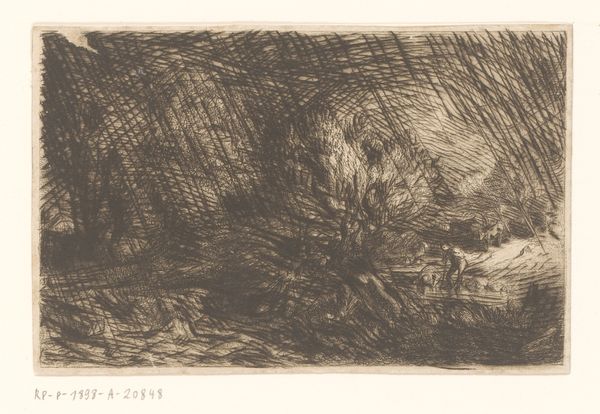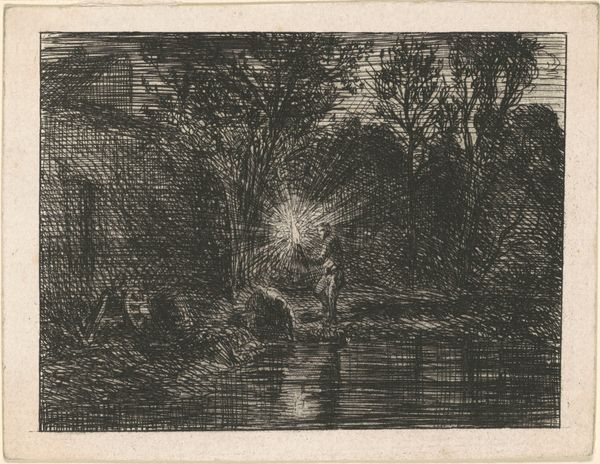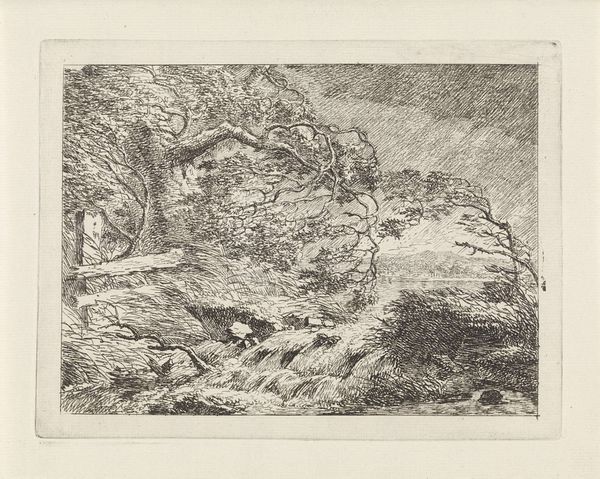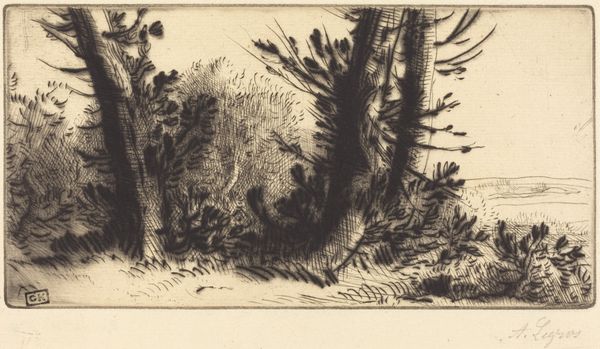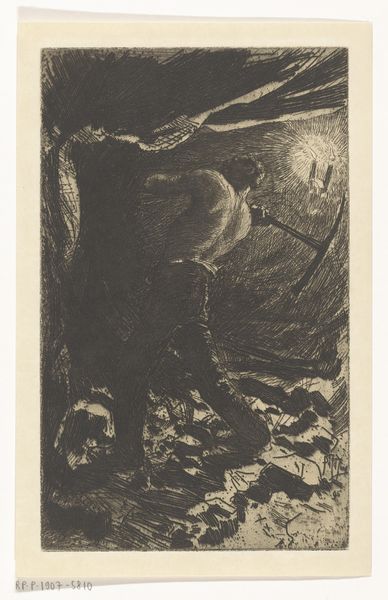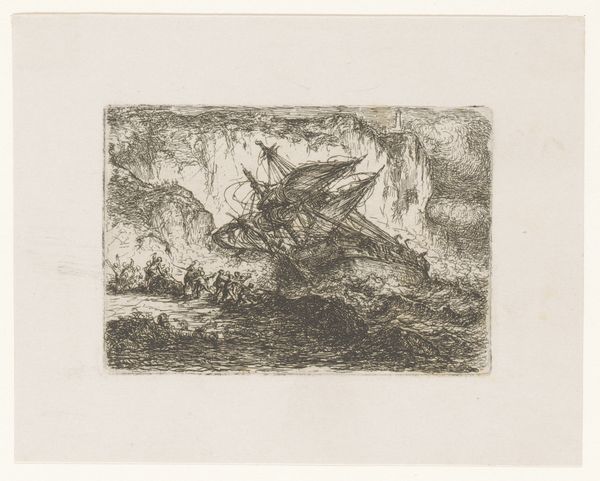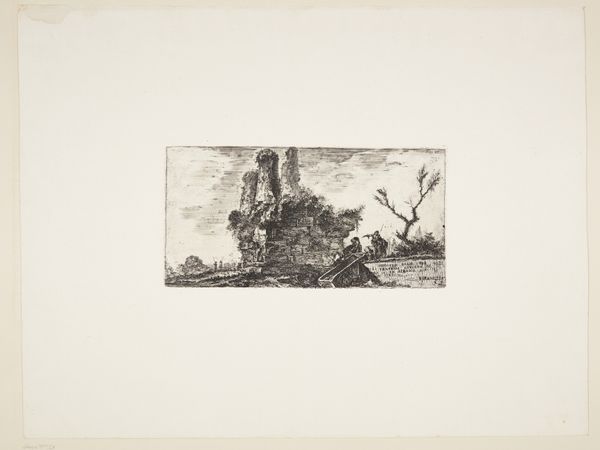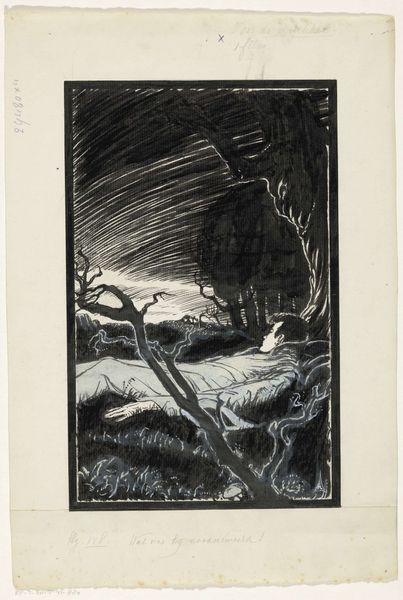
drawing, print, etching, engraving
#
drawing
# print
#
etching
#
landscape
#
figuration
#
engraving
#
realism
Copyright: National Gallery of Art: CC0 1.0
Editor: This is Alphonse Legros’s "Return to the Cottage," likely from the late 19th century, created using etching and engraving. It evokes a sense of starkness and labor. The figure carrying wood looks burdened. What do you see in this piece? Curator: I see a potent representation of rural labor and the cyclical nature of life. Look closely. Legros doesn't just present us with a landscape; he positions the figure, bowed under the weight, as intrinsically linked to it. Consider the socio-economic conditions of rural France at the time. What statement might Legros be making about the peasant class and their relationship to the land? Editor: I suppose it's not just a neutral depiction then; it's perhaps highlighting the hardship. Curator: Precisely. The weight of the wood mirrors the weight of societal expectations and economic realities. Is it simply about survival, or something deeper? Editor: It's interesting how the dark, almost claustrophobic forest contrasts with what I assume is the cottage in the distance, which seems brighter, almost like hope. Curator: And consider this hope against the backdrop of historical inequalities and the often-idealized depictions of rural life prevalent in art at the time. Legros offers a counter-narrative, doesn't he? He acknowledges the idyllic, but without romanticizing the work. Editor: It makes me think about how we often overlook the stories and experiences of those whose labor sustains us. I had only viewed it as a gloomy scene, but it’s also imbued with commentary on class, work, and resilience. Curator: Exactly, viewing "Return to the Cottage" this way allows us to connect its historical context to current conversations about labor, class, and representation. Editor: Thank you; it certainly provides a deeper appreciation for the artwork.
Comments
No comments
Be the first to comment and join the conversation on the ultimate creative platform.
